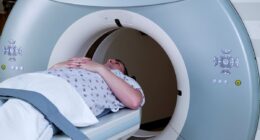
Adults up to those aged 50 accounted for more than 72% of the 12-month total prevalent cases of migraine in the 7MM, while those aged 70 years and older accounted for less than 10%.
Migraine is consistently described in studies to be more common in women compared to men. In the 7MM, the 12-month total prevalent cases of episodic migraine were predominantly based on frequency. In terms of type, migraine without aura was the most common type for migraine in the 7MM.
Antara Bhattacharya, MPH, Senior Epidemiologist at GlobalData, comments: “A higher burden of migraine in the productive age groups and disabling symptoms both substantially increase the economic burden of migraine. Despite this, the disease remains highly undiagnosed and undertreated. Therefore, more country-specific epidemiological studies are needed to elucidate the prevalence proportions in the adult population”.
Early diagnosis and symptomatic and preventive treatments can only reduce the severity of attacks as there is no permanent cure. For early diagnosis and disease prevention, better knowledge of the etiology of migraine is required.
READ RELATED: Vitamin B12 deficiency symptoms: Three painful warning signs you could be lacking B12
Source: Medindia
Source:










